Themed collection Green solvents for synthesis

Sponge-like ionic liquids: a new platform for green biocatalytic chemical processes
Hydrophobic ILs based on cations with long alkyl side-chains are switchable ionic liquid/solid phases with temperature that behave as sponge-like systems (Sponge-Like Ionic Liquids, SLILs), being applied for producing pure liquid compounds (e.g. biodiesel, etc).
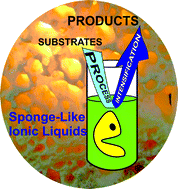
Green Chem., 2015,17, 3706-3717
https://doi.org/10.1039/C5GC00894H
Fluorous ethers
Fluorous ethers, having one or more fluorous ponytails containing longer and shorter F(CxF2x)-perfluoroalkyl substituent(s) where x ≥ 6 or x = 1–5, respectively, were reviewed including some of their basic properties, synthesis and selected applications in chemical processes.
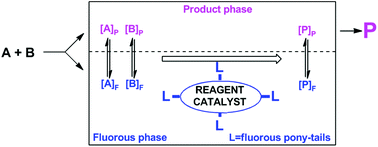
Green Chem., 2015,17, 4701-4714
https://doi.org/10.1039/C5GC01345C
Polyol synthesis of nanoparticles: status and options regarding metals, oxides, chalcogenides, and non-metal elements
The polyol synthesis of nanoparticles is reviewed, including metals, oxides, main-group elements and recent strategies to expand the method's limits.
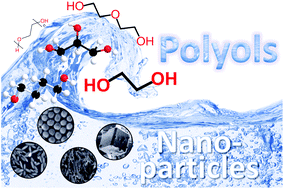
Green Chem., 2015,17, 4107-4132
https://doi.org/10.1039/C5GC00943J
Ionic liquid-stabilized nanoparticles as catalysts for the conversion of biomass
In this review we have outlined the early progress and conceptual approach towards the use of ionic liquid-stabilized nanoparticles for the conversion of biomass into chemicals and fuels.
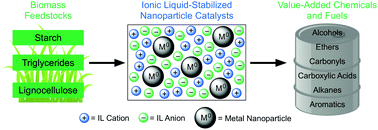
Green Chem., 2015,17, 3195-3206
https://doi.org/10.1039/C5GC00231A
Renewable pyridinium ionic liquids from the continuous hydrothermal decarboxylation of furfural-amino acid derived pyridinium zwitterions
Fully renewable pyridinium ionic liquids were synthesised via the hydrothermal decarboxylation of pyridinium zwitterions derived from furfural and amino acids in flow.
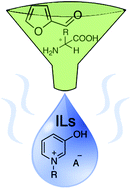
Green Chem., 2015,17, 4151-4156
https://doi.org/10.1039/C5GC00913H
Water decontamination with hydrogen production using microwave-formed minute-made ruthenium catalysts
A method for the decontamination of water, with concomitant hydrogen formation, is herein described.

Green Chem., 2016,18, 1469-1474
https://doi.org/10.1039/C5GC01798J
Direct transformation of carbohydrates to the biofuel 5-ethoxymethylfurfural by solid acid catalysts
Biomass-based mono-, di- and polysaccharides are directly converted to the biofuel 5-ethoxymethylfurfural (EMF) in ethanol by solid acid zeolite catalysts or by a combined zeolite–Amberlyst catalyst system in a one-pot, two-step process.

Green Chem., 2016,18, 726-734
https://doi.org/10.1039/C5GC01043H
A virtual screening approach to identifying the greenest compound for a task: application to switchable-hydrophilicity solvents
QSAR-based virtual screening makes it easier to identify lead structures that could simultaneously satisfy several performance criteria and several green criteria.

Green Chem., 2015,17, 5182-5188
https://doi.org/10.1039/C5GC01022E
Supercritical methanol as solvent and carbon source in the catalytic conversion of 1,2-diaminobenzenes and 2-nitroanilines to benzimidazoles
Benzimidazoles and N-methylbenzimidazoles were synthesized by simply heating 1,2-diaminobenzenes in supercritical methanol over copper-doped porous metal oxides.
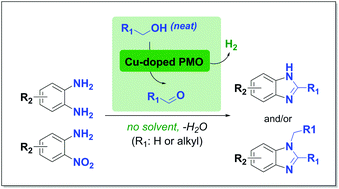
Green Chem., 2015,17, 5172-5181
https://doi.org/10.1039/C5GC01040C
Direct asymmetric reduction of levulinic acid to gamma-valerolactone: synthesis of a chiral platform molecule
Biomass-originated levulinic acid was directly converted to optically active (S)-gamma-valerolactone, a proposed biomass-based chiral platform molecule.

Green Chem., 2015,17, 5189-5195
https://doi.org/10.1039/C5GC01099C
A choline chloride/DMSO solvent for the direct synthesis of diformylfuran from carbohydrates in the presence of heteropolyacids
Here we report the one pot conversion of fructose to DFF in the presence of a mixture of choline chloride (ChCl) and DMSO as a solvent and Mo-Keggin heteropolyacids.
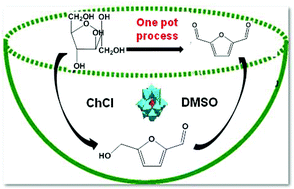
Green Chem., 2015,17, 4459-4464
https://doi.org/10.1039/C5GC01336D
Ecotoxicity studies of glycerol ethers in Vibrio fischeri: checking the environmental impact of glycerol-derived solvents
Most glycerol-derived ethers display low or null ecotoxicity against Vibrio fischeri biomarker, supporting the low environmental impact of this biobased solvent family.
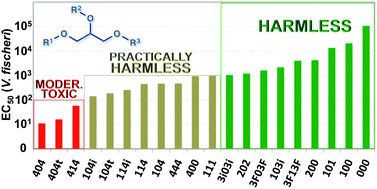
Green Chem., 2015,17, 4326-4333
https://doi.org/10.1039/C5GC00857C
Liquid coordination complexes: a new class of Lewis acids as safer alternatives to BF3 in synthesis of polyalphaolefins
Low-viscosity polyalphaolefins were synthesised using AlCl3-based liquid coordination complexes (LCCs), in a sustainable and economically competitive process.
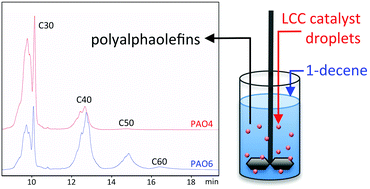
Green Chem., 2015,17, 1831-1841
https://doi.org/10.1039/C4GC02080D
About this collection
This collection of articles is based on presentations at the Green Solvents for Synthesis meeting held in Dresden, Germany, in October 2014. The Guest Editor is Professor Walter Leitner (RWTH Aachen, Germany).